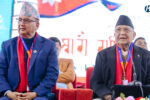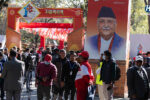After pumping $1.3 trillion into developing countries through the Belt and Road Initiative (BRI), China’s ambitious infrastructure project, the focus has shifted from building bridges and roads to managing the debt burden this largesse created.
While China remains the world’s biggest bilateral lender, committing nearly $80 billion in 2021, the loans are increasingly for debt relief rather than new projects.
This pivot reflects both criticism from some recipient countries over unsustainable debt and a change in China’s lending priorities.
Policy banks, which once led the charge, now handle less than a quarter of the loans, showcasing China’s evolving approach to its role in financing the developing world.
In China, the ruling Communist Party (CCP) wields enormous control over the economy, weaving an intricate web of influence across state-run institutions and even private businesses.
This state-capitalist system allows the CCP to pull the strings through various mechanisms.
At the centre stands the State-Owned Assets Supervision and Administration Commission (SASAC), managing massive state-owned enterprises (SOEs) focused on critical sectors.
Similar entities oversee provincial corporations, ensuring alignment with national goals.
China has poured considerable investments into infrastructure projects across Africa, from major gas pipelines in Nigeria and railways in Uganda to projects in Egypt, Ethiopia, and more.
But the CCP’s reach extends beyond ownership. It embeds party cells within companies, offering guidance and monitoring adherence to party objectives.
Key decisions, appointments, and projects all flow through party committees, solidifying their grip on strategic direction.
Finally, national security laws like the 2017 National Intelligence Law empower the state to demand information and assistance from any company within its grasp, further tightening its hold on the economic domain.
China exerts influence over other countries through the actions of its powerful companies.
The main tool is economic leverage.
When a country becomes virtually dependent on Chinese businesses, the latter gains bargaining power.
This may take the form of threats, imposing economic costs, or subtly influencing policy decisions through informal trade restrictions, administrative measures, or other means.
In some cases, China’s large market share allows it to manipulate trade flows and supply chains, either to its advantage or to disadvantage other countries or companies.
This is a key challenge when dealing with a state-controlled economy like China, where corporate and government interests are often intertwined.
The ambitious Belt and Roads initiative (BRI) illustrates this phenomenon.
Launched in 2013 by Xi Jinping, the BRI is China’s ambitious plan to build two new trade routes linking it to the world.
The initiative involves far more than just infrastructure, however. It aims to create a vast, interdependent market for China, bolster its economic and political power, and pave the way for a high-tech economy.
President Xi Jinping expanded the vision in 2014, proposing a seafaring “Maritime Silk Road.”
This longer route, bypassing the Malacca Strait, aims to connect China, Southeast Asia, Africa, and Europe with ports, bridges, and infrastructure.
Pakistan, through the China-Pakistan Economic Corridor, is seen as a key partner.
Chinese banks, the primary source of infrastructure loans to developing nations, have tightened their purse strings. New lending has decreased, while their focus has shifted towards “rescue loans.”
For China, BRI is more than just economics. It is about securing its vast land borders, some shared with unstable nations or US rivals like Russia.
BRI investments are seen as a way to build partnerships and influence through “periphery diplomacy.”
China has poured considerable investments into infrastructure projects across Africa, from major gas pipelines in Nigeria and railways in Uganda to projects in Egypt, Ethiopia, and more.
In Kenya, a Chinese-built high-speed railway running between Mombasa and Nairobi stands as a flagship project, creating jobs and training opportunities while also raising concerns about Kenya’s ability to manage the debt incurred from Chinese loans.
Beyond Africa, the Belt and Road Initiative has stretched into developed European nations, causing unease among Western observers.
Greece, for instance, facing economic woes after the 2008 crisis, saw China’s shipping giant Cosco acquire a majority stake in its major Piraeus port and later formally join the Initiative.
Similarly, Italy signed a memorandum of understanding with China in 2019, sparking US concerns. However, Italy’s involvement has remained largely symbolic, with little concrete progress beyond diplomatic niceties.
This culminated in Italy’s official announcement in December 2023 that it would not renew its participation in the Belt and Road Initiative.
Initially, China poured loans into these countries for infrastructure projects. However, many borrowers ran into trouble, experiencing foreign exchange crises and political instability.
As a result, they couldn’t repay their debts, leaving China with a mountain of bad loans.
Nearly 60% of China’s overseas loans are now held by distressed countries, a sharp rise from just 5% in 2010.
Examples like Pakistan and Sri Lanka highlight the problem. Sri Lanka’s economy recently collapsed, and Pakistan teeters on the brink.
Flood-ravaged Pakistan and debt-burdened Bangladesh have turned to the IMF for bailouts. Many African BRI projects also struggle to repay loans.
Several factors contributed to this situation. First, BRI lending slowed after 2017 due to project difficulties and China’s financial risk concerns.
Second, concerns about secrecy and corruption in securing these projects further complicated matters.
This lack of transparency surprised Chinese lenders when borrower economies plummeted.
The situation worsened with the pandemic and Ukraine war, straining emerging economies.
As more countries struggle with debt, China faces potential losses and needs to reconsider its BRI approach.
China’s generous loans to low-income countries backfired, leaving it with mounting bad debts and a need to adjust its BRI strategy.
This trend raises concerns about China’s growing clout as a creditor, particularly since they are increasingly shifting loan currency to the renminbi and demanding control over repayment through escrow accounts.
Chinese banks, the primary source of infrastructure loans to developing nations, have tightened their purse strings. New lending has decreased, while their focus has shifted towards “rescue loans.”
These emergency bailouts now make up nearly 60% of China’s total lending to low- and middle-income countries, a staggering increase from just 5% a decade ago.
This trend is highlighted in a new report by AidData, a research institute dedicated to tracking China’s development financing.
The report paints a picture of changing priorities in Chinese lending, with a growing emphasis on salvaging existing projects rather than financing new ones.
In recent years, China’s overseas lending has seen two major players emerge: its central bank, directly extending loans to Belt and Road Initiative partner countries, and its larger commercial banks, acting mostly as intermediaries for lending to developing countries through stricter Western institutions.
Despite concerns about potential debt burdens, China maintains its stance. Officials like Guo Lei, the vice president of global finance at China Development Bank, emphasize the need for risk management alongside development, while Wang Wenbin asserts that “reasonable debt” can propel economic growth, mirroring practices in many countries worldwide.
Both viewpoints highlight the complex and nuanced nature of China’s overseas lending and its impact on recipient nations.
China’s central bank is increasingly playing the role of debt collector, providing emergency loans to countries already struggling to repay previous loans from its financial institutions.
These “rescue loans” are significantly larger for heavily indebted countries, averaging $965 million compared to $26 million for less indebted ones.
In maneuvering through this intricate terrain, the world grapples with the stark realities of China’s economic prowess and the strings attached to its largesse.
This trend raises concerns about China’s growing clout as a creditor, particularly since they are increasingly shifting loan currency to the renminbi and demanding control over repayment through escrow accounts.
This gives China preferential repayment status, potentially leaving other lenders behind in case of debt relief agreements.
The situation is especially relevant in Africa, where 15 countries hold such accounts for a total of $2.5 billion.
Eventually, China’s BRI, initially a grand infrastructure vision, has morphed into a financial battleground.
With a staggering $1.3 trillion investment, the narrative shifted from development to debt management, revealing China’s self-interest and shifting priorities.
The Communist Party’s iron grip on the economy, enforced through entities like SASAC, extends beyond ownership to embedded party cells dictating corporate actions.
China’s economic leverage exploits dependency, creating a geopolitical chessboard where trade manipulation and influence intertwine.
As debtor nations reel from economic turmoil, China’s rescue loans become tools of control, solidifying its creditor dominance.
The BRI’s evolution underscores a calculated strategy for reinforcing China’s dominance in the economic arena and leveraging economic power for global influence as well.
In maneuvering through this intricate terrain, the world grapples with the stark realities of China’s economic prowess and the strings attached to its largesse.
(Author, Dr. Maheep is a leading analyst of International Relations and Global Politics. He regularly contributes on issues of utmost importance for humanity)









Comment